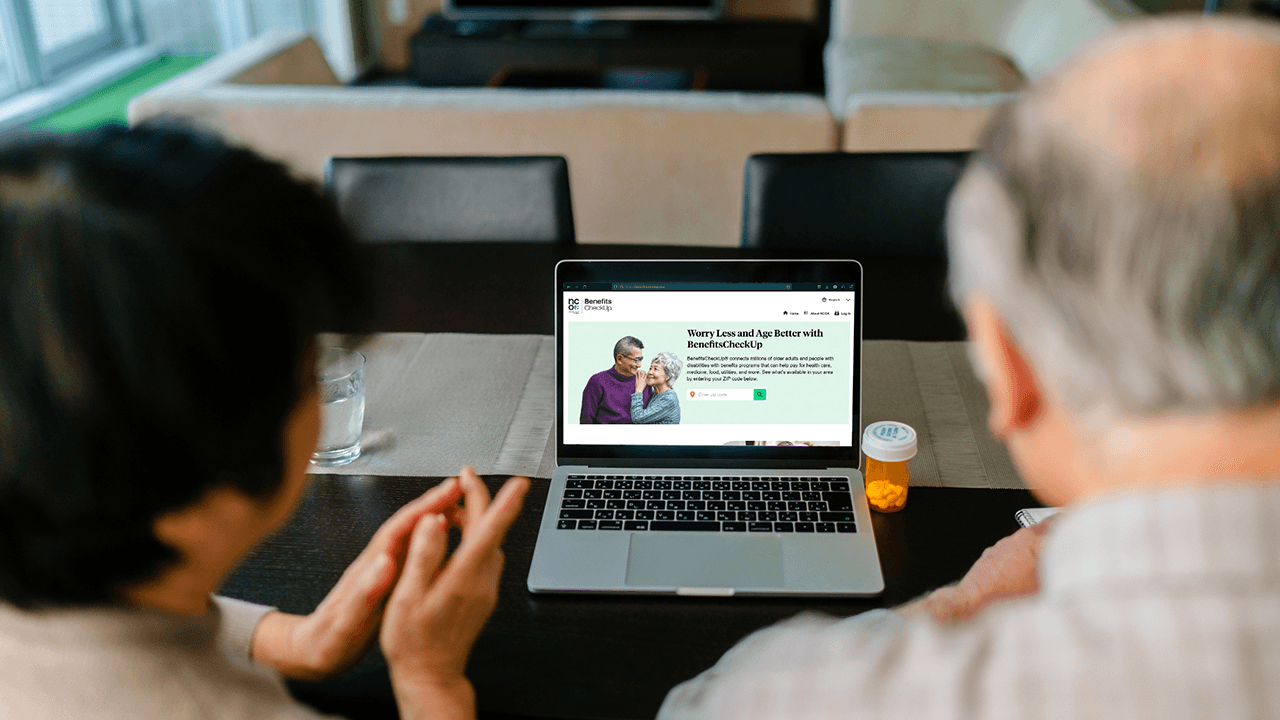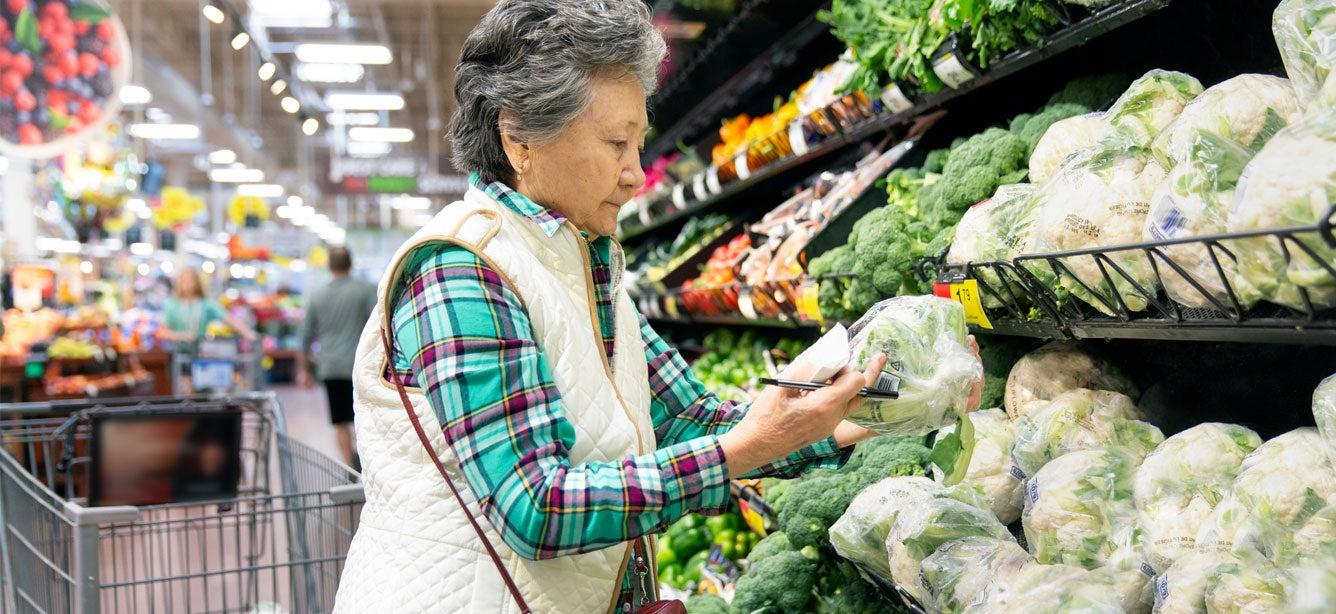
You’ve applied for Supplemental Nutrition Assistance Program (SNAP) benefits, formerly known as Food Stamps, and you’re waiting for next steps—including your required SNAP interview appointment.
Speaking of that: just how hard is the SNAP interview, anyway?
If the mere thought of answering questions under pressure makes your palms sweat and your heart race, then this guide is for you. When you know exactly what to expect at a SNAP interview before it happens, you can take some simple steps to prepare. Not only will this set you up for success, but it can help calm your nerves, too.
Ready to ace your SNAP interview? Here are 5 quick tips to help you do it.
1. Understand the SNAP interview process
The purpose of the SNAP interview isn’t to trip you up or give you a failing grade. It’s simply to verify the information you already provided on your SNAP application.
“Really, your SNAP interview is a formality,” explained NCOA’s Jessica Johnston, Senior Director, NCOA Center for Economic Well-Being. “It’s essential, and you need to take it seriously—but it can help to remember that you’ve already done the hard work. This interview is the bow that neatly wraps up your application package.”
Your SNAP interview is mandatory according to federal rules—and it’s there to work for you, not against you. Every day counts when you need food assistance. That’s why, once you’ve licked the stamp or hit “send” on your online application, your local SNAP agency has 30 days to conduct your interview and determine your eligibility. So, keep your eyes peeled and your ears perked; a representative should be in touch to schedule your appointment shortly after you submit.
You might not have to go anywhere, either; many states allow SNAP phone interviews in lieu of in-person appointments. Be sure to ask about your options when your representative contacts you.
2. Know what your SNAP interview questions might be
Here’s the good news: You’ve answered most of them once already. In fact, if you have a copy of your SNAP application handy, you can anticipate the questions your interviewer will likely ask.
While this may seem redundant, the SNAP interview exists for good reason. It helps ensure that your application is complete, accurate, and ready for approval.
“It’s easy to make unintentional mistakes on any form, and the SNAP application is no different,” Johnston explained. “You might leave a space or two blank and not realize it; or maybe the directions are confusing, so you answer to the best of your ability but the information you provided isn’t exactly right. In either instance, you could be disqualified from receiving SNAP benefits and not understand why.”
You may have heard the SNAP interview is meant to uncover food stamp fraud. In reality, according to the USDA, fraud is exceedingly rare.1 When it does occur, it’s usually “on-the-ground” in the form of trafficking (when someone sells their benefits to someone else) or an ineligible retailer who accepts EBT payments. Fully 98 percent of participating SNAP households are eligible, according to the USDA, which means that fraudulent applications are not the issue.
Therefore, thinking of your interviewer as an ally can help you reframe the experience in a positive light and remove some of the anxiety over the process. Even if you answered some questions incorrectly on your application, this is your opportunity to get help correcting them.
Each interviewer will have their own style. That said, you can generally expect to answer questions like:
- What is your full name and birthday?
- What is your Social Security number?
- Where do you live? (You may still qualify if you’re houseless.)
- Are you a U.S. citizen? (You may still be eligible if you’re a non-citizen.)
- What’s your monthly income?
- Do you pay utilities? What other regular bills do you have?
3. Gather what you need for your SNAP interview
When it comes to your SNAP interview, an ounce of organization is worth a pound of perspiration! Now that you know what your interviewer will ask about, you can pull together the documentation you’ll need to answer easily and accurately. This can include:
- Your Social Security card (if you don’t have your number memorized)
- A letter from a shelter representative if you’re houseless and staying there
- Proof of identity
Acceptable options include:
- Birth certificate
- Driver’s license
- U.S. passport
- Work visa
- Resident alien card
- Proof of income
Make sure to have the following ready if any of them apply to you:
- Pay stubs
- Benefit letters (from Social Security or Veterans Administration, for example)
- Pension statements
- Proof of deductions
Have handy any bills, or payment records for, qualified deductions such as:
- Dependent-care costs (for a disabled household member, for example)
- Rent or mortgage
- Utilities (heat, water, electric, cable, telephone, etc.)
- Medical expenses
Be sure to collect this information in advance and either stack it near your phone or tuck it into a file that you can grab and take with you to your interview appointment. And remember: your SNAP eligibility applies to your entire household, so you will want to have documentation for everyone who lives with you.
4. Practice in advance for your SNAP interview
As every job-seeker knows, you can be well prepared for an interview and still be anxious about it. It’s natural to feel this way about your SNAP appointment, too.
You’ve already done the hard work of collecting your documentation, so why not consider a “dry run” while you wait for your interview? This tried-and-true trick can boost your confidence and erase any lingering doubt you may feel about the process.
Use the list of SNAP interview questions above and picture yourself responding to them. Imagine how it feels to answer confidently and practice doing it. If you live with someone else, ask them to pose the questions and offer feedback on your answers. If you live alone, you could even sit in front of a mirror.
There’s no right or wrong way to practice, and if you think it could be helpful, there’s certainly no harm in doing it!
5. Don't forget to breathe
Mindful deep breathing relaxes your muscles, slows your heartbeat, decreases your blood pressure, and centers your thoughts. When it’s time for your SNAP interview, whether on the phone or in person, take a few deep breaths. You’ve got this!
Frequently Asked Questions (FAQs) about the SNAP interview process
Can I bring someone with me to my SNAP interview?
Yes. There’s no rule preventing it, and it can be helpful to have moral support as well as a second set of ears.
In many states, you can even designate an authorized representative to complete the interview for you. This can be particularly helpful if you’re housebound and unable to get to an in-person appointment; have difficulty communicating over the phone; or have another reason why you need help with the interview. Be sure to check with your local SNAP agency to see if this option is available.
I’m in a really tough financial spot. Do I have to wait 30 days to learn whether my SNAP benefits/food stamps were approved?
You shouldn’t have to. Generally speaking, state agencies include provisions for households with less than $100 in cash and less than $150 in gross monthly income.1 If this describes your situation—or if your household’s housing and utility costs exceed what you have in liquid assets and gross monthly income combined—you may be eligible to start receiving benefits within seven days of submitting your application, with or without an interview. Contact your state agency right away if you haven’t heard from a representative after seven days.
How can I learn more about SNAP and other food assistance for older adults?
Visit NCOA’s Food Assistance for Older Adults resource page, where you’ll find a wealth of information and guidance.
Sources
1. USDA’s Snap Eligibility Guidelines. Found on the internet at https://www.fns.usda.gov/snap/recipient/eligibility




